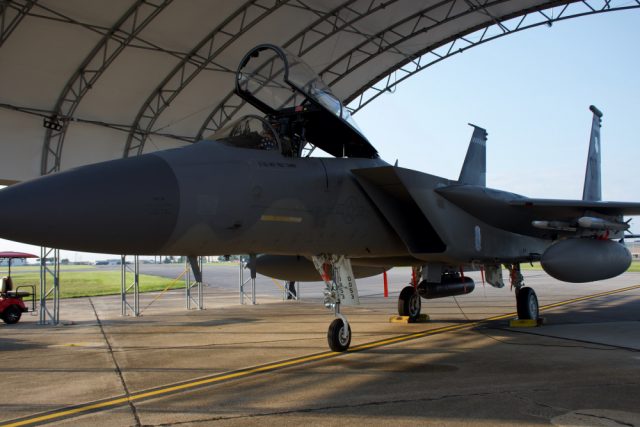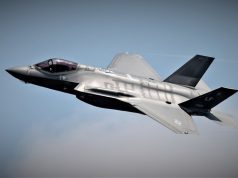
A US Air Force F-15C Eagle used its Legion Pod to shoot down a QF-16 aerial target in the first-ever live fire of an Advanced Medium-Range Air-to-Air Missile (AMRAAM) cued by an infrared search-and-track (IRST) system.
The service’s 85th Test and Evaluation Squadron completed the test on August 5.
The F-15C was equipped with Lockheed Martin’s Legion Pod IRST Block 1.5 system. The IRST passive target tracking capability was combined with the APG-63v3 radar to datalink the target location to the AIM-120, explained Maj. Brian Davis, 85th TES Chief of Air-to-Air Weapons and Tactics.
This is the latest in a series of milestones for the IRST program. Nearly a year ago to date, the service carried out the first missile shot of an AIM-9X using the Legion Pod on an F-15C and the first flight of a Legion Pod-equipped F-16.
During the August 5 test, the sensors in multiple spectrums collaborated for the missile to successfully intercept the target and closed kill chains.
“This successful live missile test is significant because an F-15 equipped with an IRST-cued AIM-120 allows us to achieve detection, tracking, targeting, weapons employment, and verification of an intercept without being dependent upon RADAR energy,” said Davis. “It’s also not susceptible to radio frequency jamming or a target’s low observable design.”
The test also coincided with the fielding evaluation of the Legion Pod Block 1.5 IRST, where members of both the 85th TES and Operational Flight Program Combined Test Force collaborated to test the datalink characterization to further develop follow-on tactics.
“This proves the capabilities of the US Department of Defense and US Air Force to lethally target an aircraft outside of the traditional radar electromagnetic spectrum,” said Lt. Col. Jacob Lindaman. “Pairing that with the ability to also adopt the Legion Pod on any platform sets a precedent for what’s to come.”


























